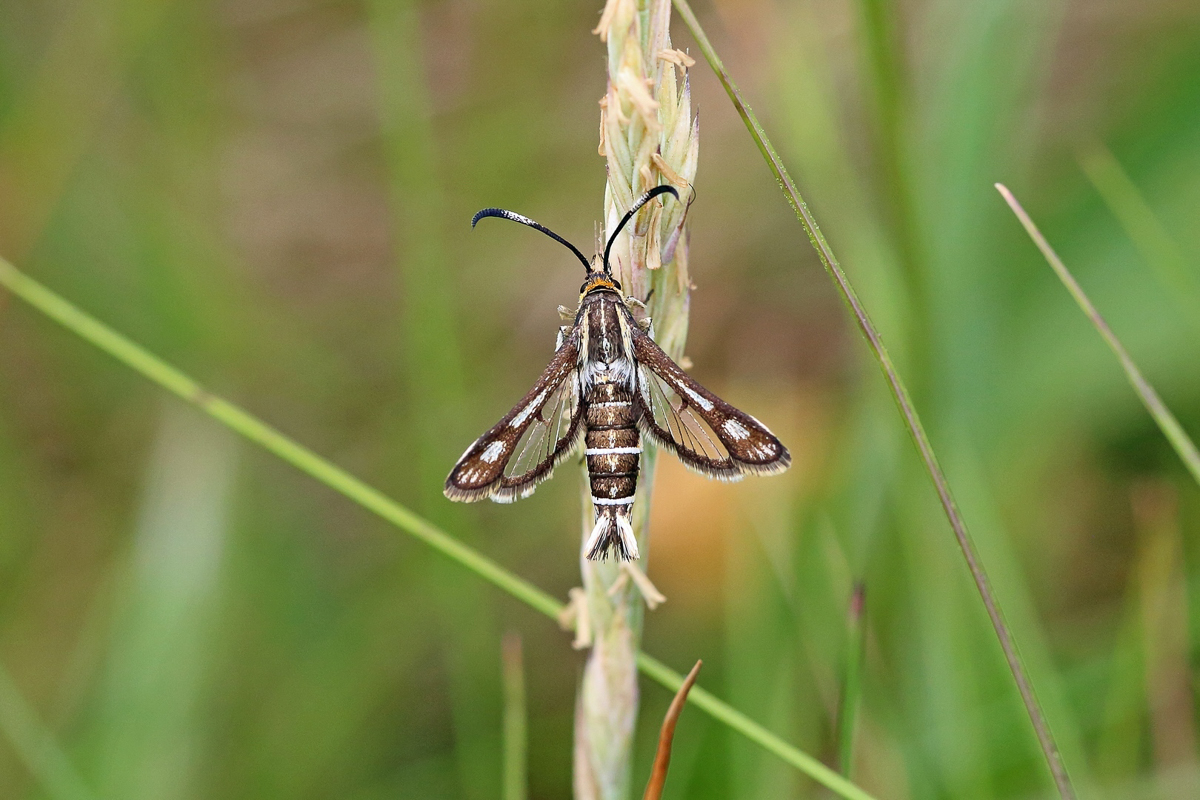
Photo © Nigel Voaden
Pyropteron muscaeforme, the thrift clearwing, is a moth of the family Sesiidae. It is known from most of Europe.
A small member of its genus, the wingspan is 15–18 mm. It is further distinguished by narrow clear (transparent) spaces on the blackish, or bronzy, forewings. There are three whitish bands on the body, and traces of a whitish line along the middle of the back. Adults can be found on the flowers of the host plant, as well as on thyme (Thymus vulgaris). Males are attracted to pheromone lures. It is found on exposed rocky areas where its larval food plant occurs and overwinters as a larva.
Eggs are ovoid, are black with white retriculations and are laid on thrift (Armeria maritima). They can only be seen under magnification, as they are only c. 0.7 mm on the longest axis.
Larvae are 11-15 mm long. They have a yellowish-white body, reddish-brown head and the prothorax is pale brown. They feed from August to May on the roots and stem in a silk-lined tunnel. In late summer and autumn, piles of reddish-frass can be seen extruding from infected stems. Plants with larvae are often on the edge of large patches of thrift. Larvae of Lobesia littoralis feed in the flowers, shoots and leaves in the spring and seeds in the autumn.
The pupa is slender and tapering, 12–14 mm long and is light reddish-brown with darker brown eyes, thorax and wings. It does not pupate in a cocoon.
Source: Wikipedia
The primary larval foodplant is Thrift (Armeria maritima).